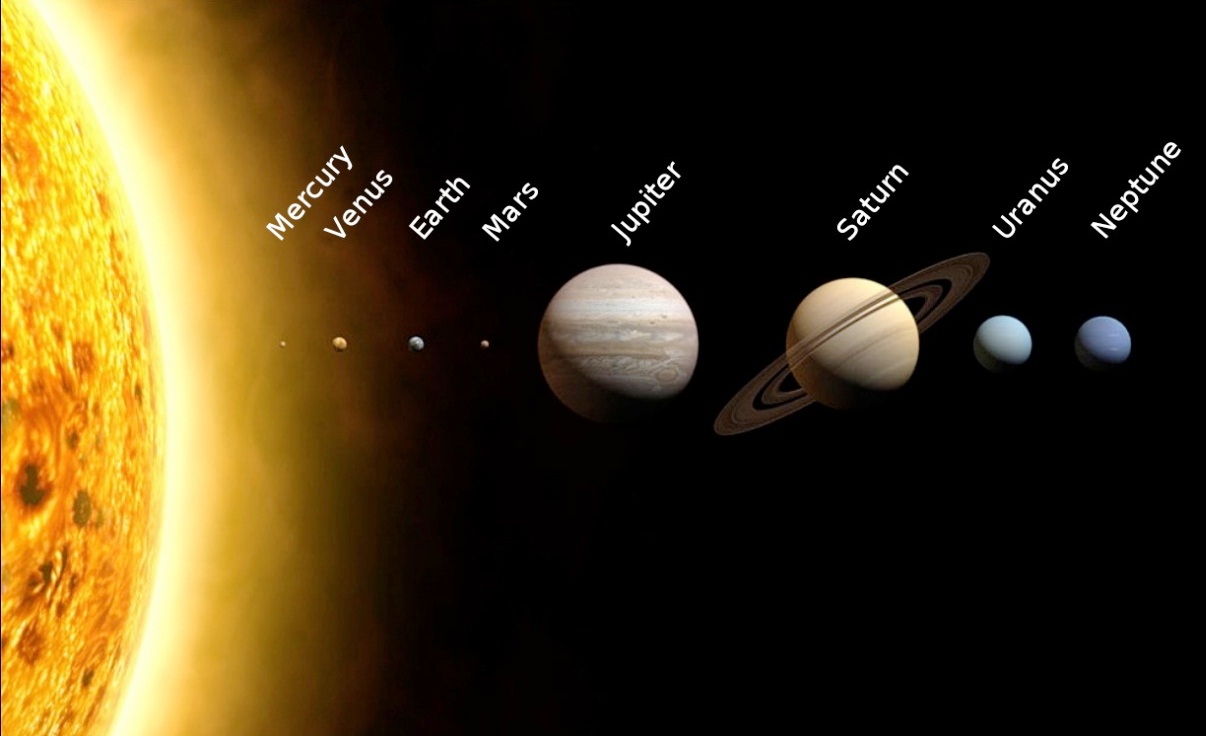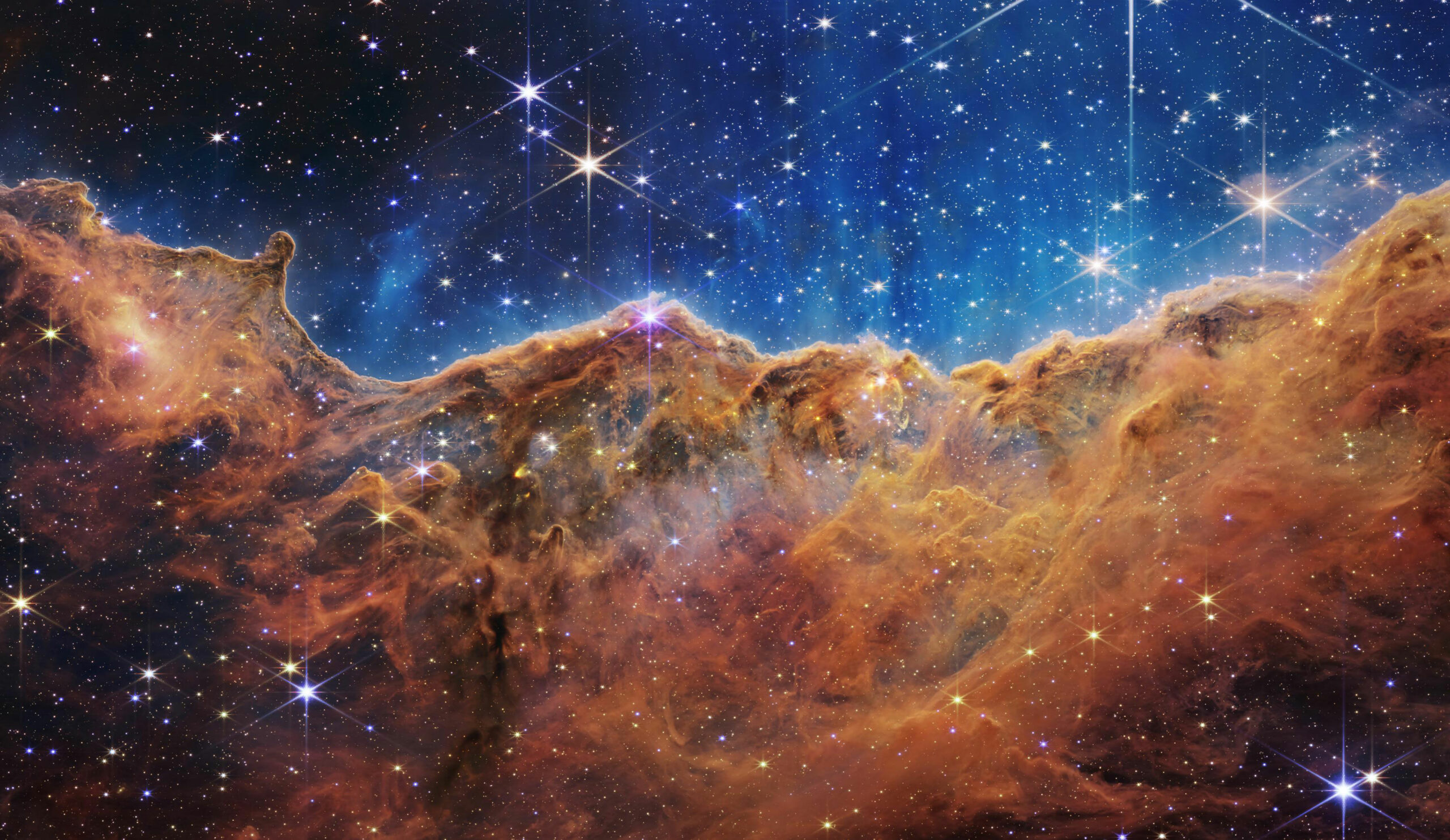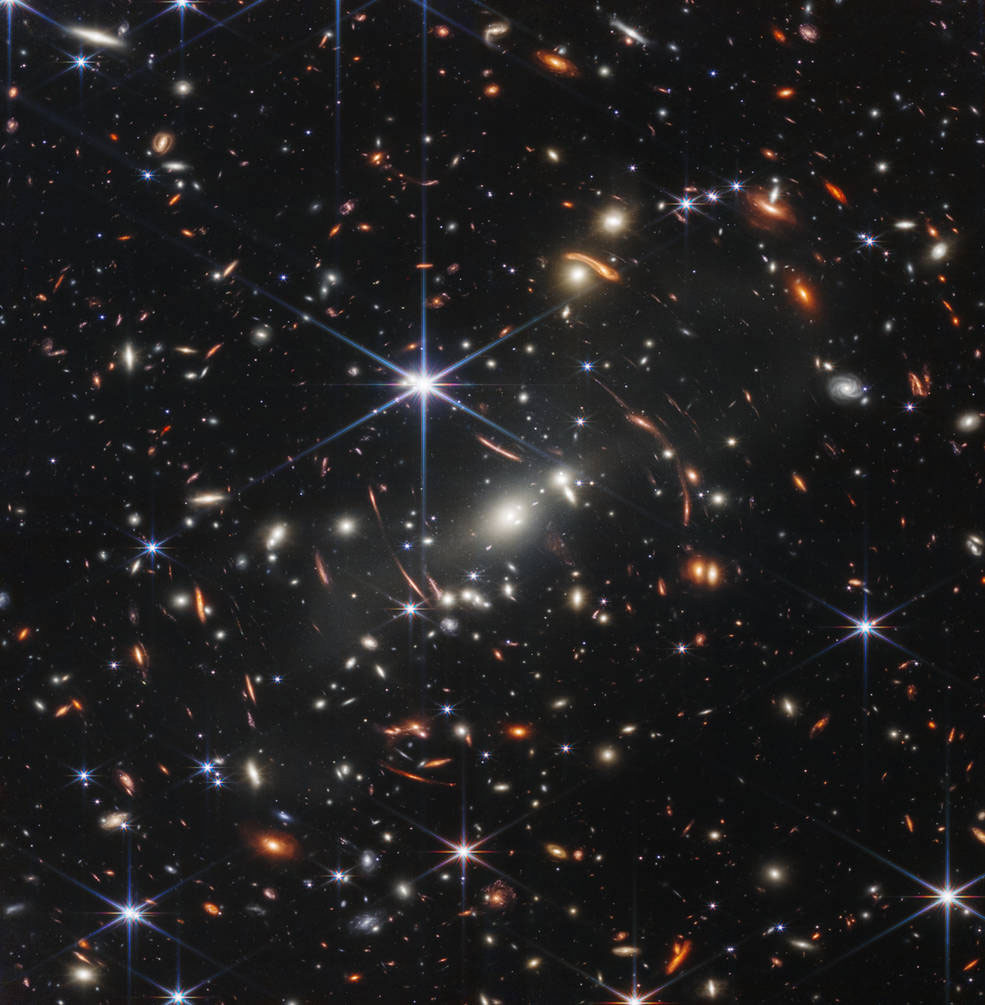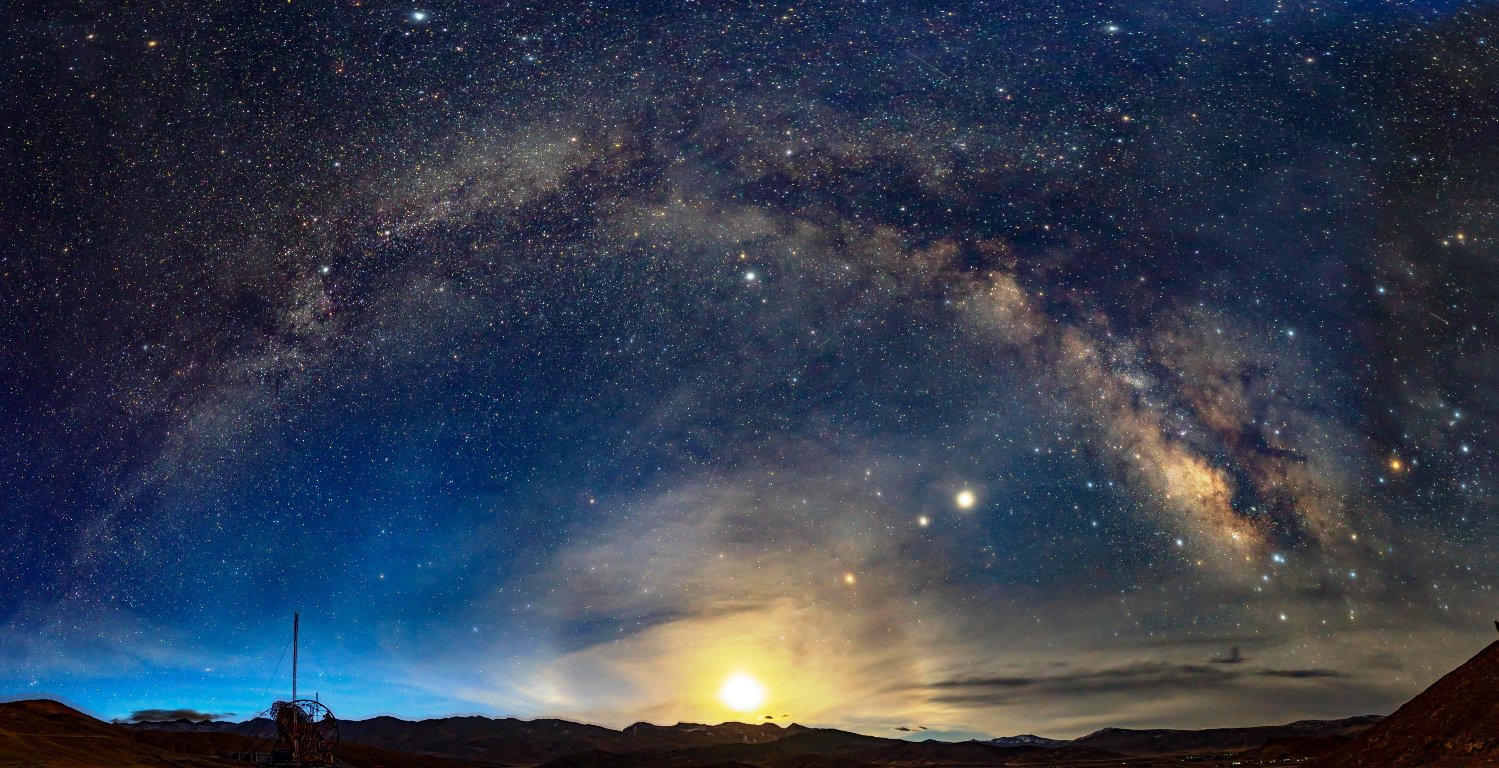by Ajaz Ahmad Khawaja
The father, Sun, lovingly called Sol by the space aficionados, is the real star and the breadwinner of the family. It is the sun that provides the warmth, light, and everything necessary for sustenance and the progress of life. Science freaks call the father a G-type main-sequence yellow dwarf star.

The Milky Way galaxy is a family of over 100 billion stars, with approximately half of them expected to have planets of their own. Thus, making more than 50 billion planetary systems in the whole clan. Astronomers so far have been able to discover more than 5000 planetary systems with the help of various sophisticated techniques. Ours is one among them, and it goes by the name of the Solar System. The solar family is not just an amalgamation of eight celestial bodies that orbit around the centre orb—but they also include asteroids and comets that pass nearby, the Kuiper belt and the Oort Cloud, beyond which the Sun’s influence (heliosphere) starts diminishing.
It is amazing to find out that the planets are not exempted from the trials and tribulations of family dynamics. Even though they are floating billions of kilometres apart, they can still be pulled into the ambit of family drama.
‘Solar Family’
Surprisingly, just like humans, planets too have to deal with the baggage of their past. The father, Sun, lovingly called Sol by the space aficionados, is the real star and the breadwinner of the family. It is the sun that provides the warmth, light, and everything necessary for sustenance and the progress of life. Science freaks call the father a G-type main-sequence yellow dwarf star. However, the sun is an average-sized star living halfway through his extraordinary life. Yet it holds 99.86 per cent of the total mass of the solar family. If compared with the largest star known to date—Stephenson 2-18b—the Sun is 10 billion times smaller in volume.

It is surmised that at the end of the times, approximately five billion years from now, the sun will bloat with obesity and will expand to such an extent that it will consume Mercury- the naughty toddler, Venus-the goddess of love, Earth-the miss universe, and Mars-the god of war, during its course to the red-giant phase. This is going to be gradual but is inevitable.
The Mercury
Mercury, which is the closest to the father, is constantly baked by the sun’s warmth. It keeps toddling around the father and completes one circle in 88 days. With an almost negligible atmosphere, Mercury experiences extremes of temperature swings during its day and night times resembles Earth’s moon in appearance and has the most craters in the entire Solar System. Being the smallest member of the family, Mercury keeps on doing weird things. Like, a single year on Mercury lasts only 88 Earth days, but it’s extremely slow rotation makes a day two times longer than that on Earth.
Venus, the disguised beauty that was named after the Roman goddess of magnificence and love, is exactly the other way around. Venus, the hottest planet in the solar system, is a live hell, with the surface temperature reaching up to 465 °C. Often seen from the Earth in the mornings and evenings on the horizon, Venus strikes with her beauty but in reality, is a deceiver-in-chief. The USSR once tried to propose to her by landing more than 12 consecutive Venera Probes on the planet but none could last longer than two hours. Unlike her sister planet—Earth, Venus has endured a love-hate relationship when it comes to her surface exploration.
Ms Universe
Earth, the Miss Universe, remains the only planet so far that gives birth to life in the cosmos. She is miraculous, enchanting, and holds everyone spellbound. She offers water, the very first substance in the universe, as per Thales of Miletus. She resides in the Goldilocks zone of the father Sun. She is not only beautiful but brave enough to burn millions of meteors that attack her every now and then. It is the earth that stabilises the temperature differences necessary for the survival of life.

The perfectly aligned moon helps her to flourish with the abundance of life. The Moon also stabilizes her dances and assists her in the formation of tides. In brief, there is none like Earth, and no one can ever be. Although Mars, the younger brother of Earth, has a harsh environment, there are science gurus who see signs of life on its red face, which is an exciting and intriguing possibility. Transforming the red planet into a more Earth-like world that could support human life seems like a herculean task.
The Jupiter
Jupiter, the sane caretaker and the eldest of the siblings, is one responsible son who takes care of his sister Earth better than anyone else in the whole universe. It protects earth by deflecting most of the rogue asteroids and lout comets coming from outer space.
That is why Jupiter is often called the vacuum cleaner of the solar system. It is actually a giant, but not a solid one. It holds no water either. It is always surrounded by intense dust storms, yet it survives in bad weather and shines brightest in the night sky after the Moon and Venus.
Mesmerising Saturn
Saturn, the photogenic Adonis, the heart-throb of the house, is also a gas giant and the second biggest man in the house who always flaunts his rings, which are composed of ice and rock. The mesmerizing beauty of Saturn’s rings is something that has captivated people for centuries. These rings are made up of billions of tiny ice particles, and they are one of the most stunning sights in the solar family.

Although they may look delicate, they are quite strong and have been able to withstand some of the harshest conditions in space. Saturn has an extended family of its own, with more than 82 moons guarding it day in and day out, including the stunning Titan and the icy Enceladus.
The Ice-Cold Duo
Uranus and Neptune are the ice-cool boys of the family who always mind their own business. They do not get much of our attention because of two attention-seeking children in the next room, the good-looking Saturn and the mighty Jupiter. One of the things that makes Uranus so distinct is the fact that it rains diamonds on him wherever he goes. That’s right, diamonds! Neptune, on the other hand, has remained a secret and introverted child for years. It was predicted a long time ago before its final discovery in 1846 by Johann Gottfried Galle.
Pluto, a disowned son, was thrown out of the family as a punishment recently because of him being a dwarf. However, he was alleged to have violated one of the three house rules required to remain a member of the solar family. Nonetheless, the poor boy got Hydra, Nix, and Charon (moons) in the form of inheritance. It now lives in the neighbourhood shelter home called the Kuiper Belt with millions of other dwarf beings, where he rules the roost and is called the King of the Kuiper Belt.
Sun Will Burst
As mentioned earlier, it is deduced that, in its final days, the cautious father Sun would turn violent and will devour the entire family. Mercury and Venus will be the first ones to be its victims. The next in line would be the ever-beautiful Earth. As the anger and wrath would continue to grow, the sun would first strip away her delicate veil of atmosphere. Life on Earth would be extinct by then, and the planet would eventually be submerged in the red giant sun. The sun’s expansion will cause photogenic Saturn’s ice-made rings to become increasingly tenuous and eventually disperse, thereby losing all its charm.

The solar family will thus be a lifeless horror house with the inner four planets inside the sun, and the remaining four stripped off of everything they possessed once. The frozen Pluto in the foster home is now gaining temperature and melting his ice and other gases that were frozen once. The temperature on his surface is gradually rising from -230°C to 25°C, thus giving a strong indication of his ability to host life. Pluto knew this day would come and he would prove that he too was capable of doing wonders and that the decision taken by the family to disown him was ludicrous.
(A science graduate, the author has a diploma in Astronomy and Space Science from university of Arizona. He teaches at Government High School Banwat, Poonch. The ideas are personal.)















